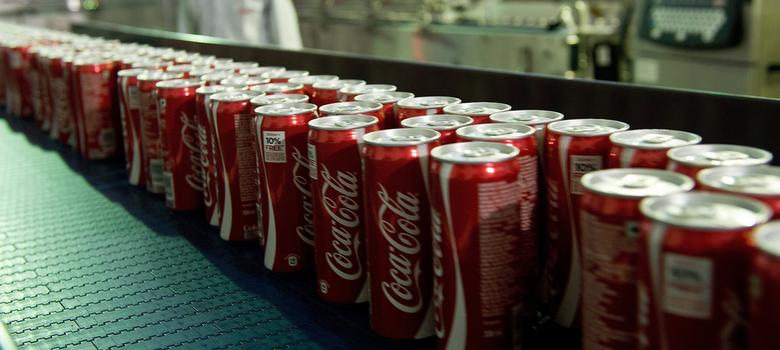
A “sin” tax is a kind of excise tax that governments may choose to apply on goods that are considered harmful to society, particularly to public health. These goods could include tobacco and alcohol products, gambling, drugs, fast food and sugary drinks – in which case it can also be called a “soda” tax, as aerated drinks are known in the US. Such taxes are imposed with the rationale that higher costs would lead to lower consumption of the harmful product and, consequently, lower rates of various medical problems.
In the past two weeks, since the “sin” tax was proposed, the Indian soda industry has been emphatically registering its protest. Some have objected to being grouped with addictive products like cigarettes and paan masala. Last week, Coca-Cola India announced that if the 40% tax is imposed, it would have no option but to shut down some of its factories, which would have a “negative ripple effect” on all the workers, manufacturers, retailers, distributors and even farmers associated with the industry. On Monday, the company even had a meeting with Arvind Subramanian to push its plea.
While this is an expected reaction from soda companies, the subject of “sin” taxes and “soda” taxes is controversial across the globe. It has as many supporters as detractors. Public health advocates in India have already hailed the Subramanian committee’s proposal, on the grounds that high consumption of added sugars is known to cause chronic health problems such as obesity and diabetes. And colas are known to have at least 10 teaspoons of sugar in every 350 ml serving.
“Childhood obesity is one of the most critical problems of our time,” said Nandita Murukutla, the country director, India, of the non-profit World Lung Foundation, which works on issues of public health. “A growing body of scientific research indicates that obese children are more likely to suffer a lifetime burden of chronic diseases like diabetes, heart disease, and even certain types of cancer.” The problem, she says, isn’t restricted to rich countries: India not only has under-nutrition but also malnutrition in the form of unhealthy diets that lead to obesity.
“Taxes on unhealthy products – including sugary drinks – are highly effective in reducing consumption of these products,” Murukutla said. “By taking such measures that will reduce obesity, the government can help to reduce chronic disease among our people and protect the country from the huge costs of those diseases.”
In the case of tobacco products, says Murukutla, there is evidence to show that increasing product prices (through sin tax or other ways) has a positive correlation with reduction of tobacco-related ailments among the vulnerable sections of society. In Mexico, a new tax on sugary drinks has brought about similar positive results.
But “soda” taxes are a far more contested subject around the world. The debate has grown stronger over the past three or four years.
Mexico
In January 2014, after several months of battling opposition from the soft-drinks industry, the Mexican government introduced a 10% tax on sugary drinks. The move was targeted at the country’s high obesity rates: more than 32% of the Mexican population is reportedly obese, while many more are overweight. Part of the reason for this, according to public health workers, is because of the popularity of aerated drinks, particularly Coca-Cola. Before the soda tax was imposed, an average Mexican consumed around half a litre of Coca-Cola a day.
A year after the tax was implemented, however, evaluation studies found that there was a 6% drop in the purchase of sugary drinks throughout 2014, and a marked 12% drop towards the end of that year. The results were even more positive in low-income households, which saw a 9% cut in soda expense across 2014 and a 17% cut towards the end of the year. Activists from the Nutritional Health Alliance, which campaigned for the soda tax, are now pushing the Mexican government to raise the tax to 20% and use the revenues to introduce other anti-obesity measures in the country.
These results, however, have been disputed by the beverage industry, which claims the tax has cut daily consumption by just six calories per person. In October, Mexico’s lower house of Congressapproved a proposal to halve the tax on sugary drinks if companies provided low-calorie options of less than 5 grams of sugar per 100 ml. Public health advocates are now accusing the government of starting to cave in to pressure from the soda industry.
New York and California
Before Mexico overtook the US as the world’s “fattest” country in 2013, Americans were already devising ways to combat their high adult obesity rate of 31.8%. The first such effort was made in 2012 by New York City’s then mayor, Michael Bloomberg.
In September 2012, Bloomberg, backed by the city’s health commissioner Thomas Frieden, approved a complete ban on the sale of sugary drinks larger than 16 ounces (around half litre). The mayor, who had previously enforced rules banning trans fats from restaurants and mandating calorie counts to be printed on menus, was already facing criticism for trying to create a “nanny state” in the name of improving public health.
The ban on large-sized sodas prompted widespread protests not just from companies but also New York citizens, with various groups seeking legal recourse. In July 2013, Bloomberg’s ban plan was rejected by a state appeals court and in June 2014, the plan was finally rejected by the highest court in the state.
While New York’s radical attempt to ban big sodas failed, several other cities in the US attempted to introduce soda taxes to fight obesity. The first to succeed was Berkeley, California, where a tax of one cent per ounce of sugary soda was implemented from January 2015. The tax was introduced on the basis of public support : despite fierce opposition from detractors, 75% of Berkeley citizens had voted in favour of the tax in November 2014.
Europe
In 2011, France approved a “fat” tax on all sugary soft drinks except for zero-calorie diet sodas, with the intention of using the added revenue to fund social security measures for farmers. It was implemented in 2012 even though soda companies slammed the tax, and by the next year, the soft drinks industry in the country began to record slower growth rates. Hungary, too, had introduced a “fat” tax on soft drinks, chocolate bars and other junk food in 2011, aiming to rake in a revenue of up to 111 million euros for public healthcare.
In the past two years, however, attempts by Slovenia and Denmark to introduce taxes on sugary drinks failed after lobbying by soda companies forced their governments to backtrack.
This month, the Welsh government became the latest to jump into the fray, backing a proposal to levy a soda or “pop” tax on sugary drinks.



